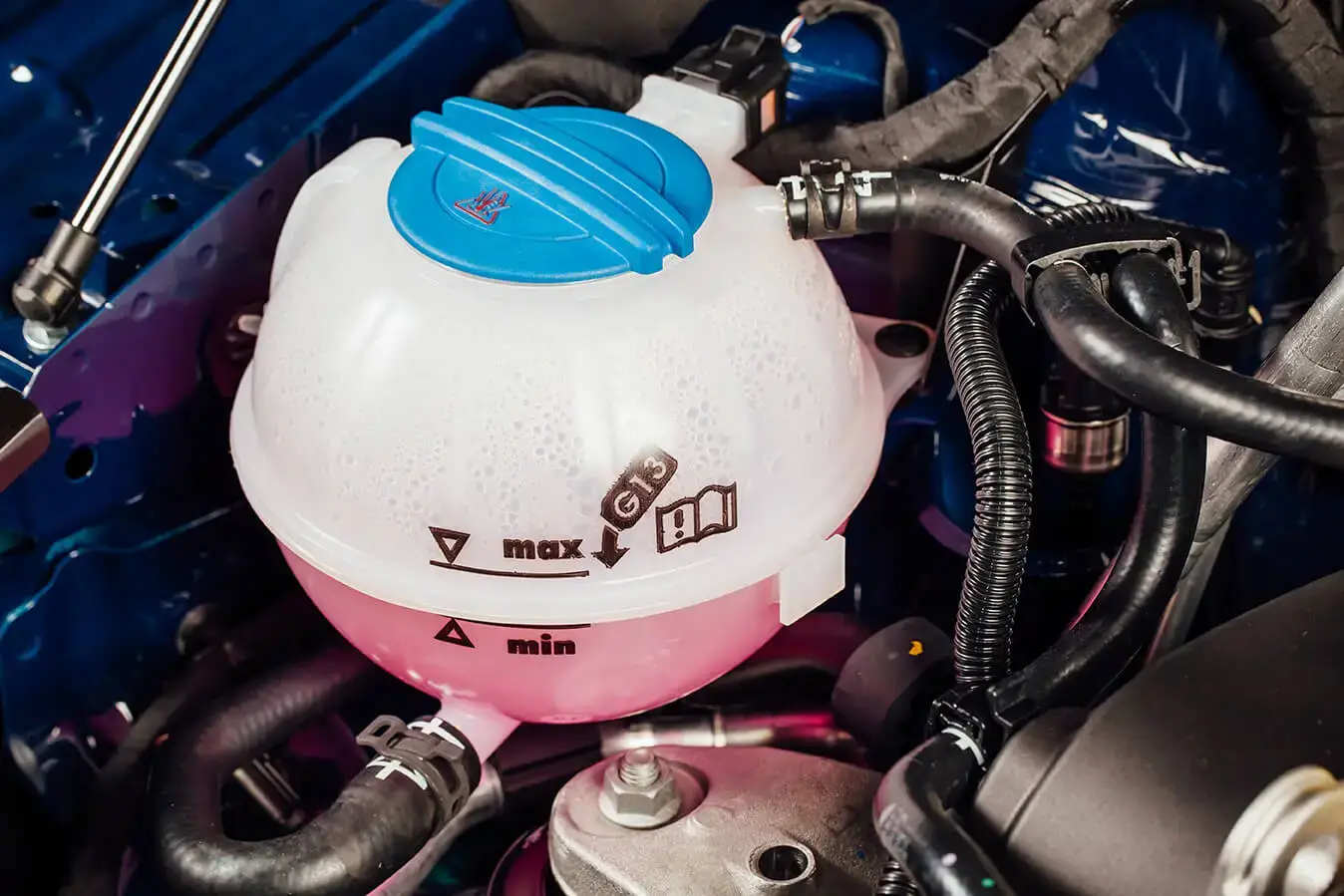How to top up engine coolant
10 Oct 2024

As you drive, the process of burning fuel causes your engine to gradually heat up. To prevent this heat from reaching dangerous levels, a special solution known as coolant is circulated through the engine block.
Here, we’ll find out exactly what this fluid is, and how to top up engine coolant to proactively maintain your engine
What is engine coolant?
Made up of a mixture of water and antifreeze, coolant helps to both regulate temperature and protect your engine from very low temperatures, dissipating heat while ensuring fluids continue to flow as intended.
Unless your car has a sealed coolant system, you need to know how to top up engine coolant when the time comes. You should regularly check your coolant levels to see if the fluid needs topping up, because running the engine with low levels can lead to engine overheating.
TOP TIP
Many people think coolant and antifreeze are the same thing. While coolant and antifreeze are closely related, they aren't exactly the same:
Antifreeze is a concentrated liquid, typically based on glycol (like ethylene glycol). It's one of the key ingredients in coolant, but you wouldn't use it directly in your car's radiator. Antifreeze lowers the freezing point of a liquid and often contains anti-corrosion properties as well.
Coolant is the mixture that goes into your car's cooling system. It's usually a 50/50 mix of antifreeze and water (de-ionized water is preferred). Coolant protects your engine from both overheating in summer and freezing in winter, thanks to the antifreeze component. It also contains other additives for corrosion protection and lubrication within the cooling system.
So, antifreeze is an ingredient in coolant, while coolant is the ready-to-use liquid for your car's radiator. You can buy pre-mixed coolant, or you can buy antifreeze and mix it with water yourself (using the correct ratio).
Where does engine coolant go?
Your car’s coolant reservoir can usually be found underneath the bonnet or hood. It looks like a large plastic container with liquid inside, and may even have the word coolant written on it. If you can’t find it, refer to your owner’s manual for instructions.
From the reservoir, coolant travels through the engine block, absorbing the heat that is generated by the engine as it runs. The heated coolant is then transferred to the radiator, where it is cooled from the airflow of the car’s movement or a fan, when the vehicle is stationary.
A water pump is used to keep coolant moving through the system. Meanwhile, a thermostat that sits between the radiator and the engine controls the flow of coolant as required.
How to top up engine coolant safely
You should never attempt to check or top up coolant when your car’s engine is hot. In this instance, coolant that is still hot and pressurised can cause injuries.
If you have leftover coolant after topping up, avoid tipping this down the drain because it is a toxic substance that will pollute the drainage system. Instead, take any surplus coolant to a designated hazardous waste drop-off site.
How to top up engine coolant step-by-step
Before you start, refer to your owner’s manual to purchase the right coolant type for your vehicle.
- Park on a flat surface, in a place where it's safe to do so, and wait until your engine is fully cold.
- Open the bonnet and locate the coolant reservoir, which is usually a translucent plastic tank with a coloured fluid inside. Check your owner’s manual if you’re not sure.
- Check whether your coolant needs topping up using the minimum and maximum fill line indicators, usually located on the side of the tank.
- If coolant is below or near the minimum line, you will need to top up. Unless you are using a pre-mixed solution, combine the correct ratio of antifreeze and water according to your manufacturer’s instructions. This is usually 50/50 but may be different depending on local climate conditions.
- While wearing safety gloves, unscrew the reservoir cap while covering it with a cloth to protect against pressurised water.
- Use a funnel to carefully top up coolant to the maximum indicator line, taking care to avoid spills (coolant is a toxic substance). Never fill past the maximum line.
- Once full, screw the reservoir cap back on until you hear it click.
If you find your coolant levels are regularly running low, book your car in with a mechanic. Coolant that is frequently dropping below the required level may indicate a leak.
How do you know when to top up engine coolant?
You should regularly check your engine coolant levels as part of a routine maintenance schedule. This prevents it from running below the recommended levels and causing damage to your car.
If coolant runs low between checks or you have a leak, there are some common signs to watch out for. These signs all indicate that your engine is overheating.
- The temperature gauge on your dashboard moves into the red zone and lights up.
- You see steam rising from beneath the bonnet.
- You smell burning.
- You notice your engine making a strange ticking or knocking sound.
- You see a pool of coloured fluid underneath your car.
There are lots of reasons your engine is overheating and a lack of coolant is just one of them. If, after experiencing one of the symptoms above, your coolant levels are not running low, you will need to investigate further to find the source of the problem. You may need help from a professional mechanic, depending on the issue.
Ultimately, topping up engine coolant is a straightforward task that helps prevent major engine damage and dangerous cases of overheating.
When choosing a coolant to top up with, opt for a high-quality formula according to your manufacturer’s recommendations. High-performance coolant ensures long-lasting protection from extreme temperatures, saving you from constant top-ups and costly, unexpected repairs.

